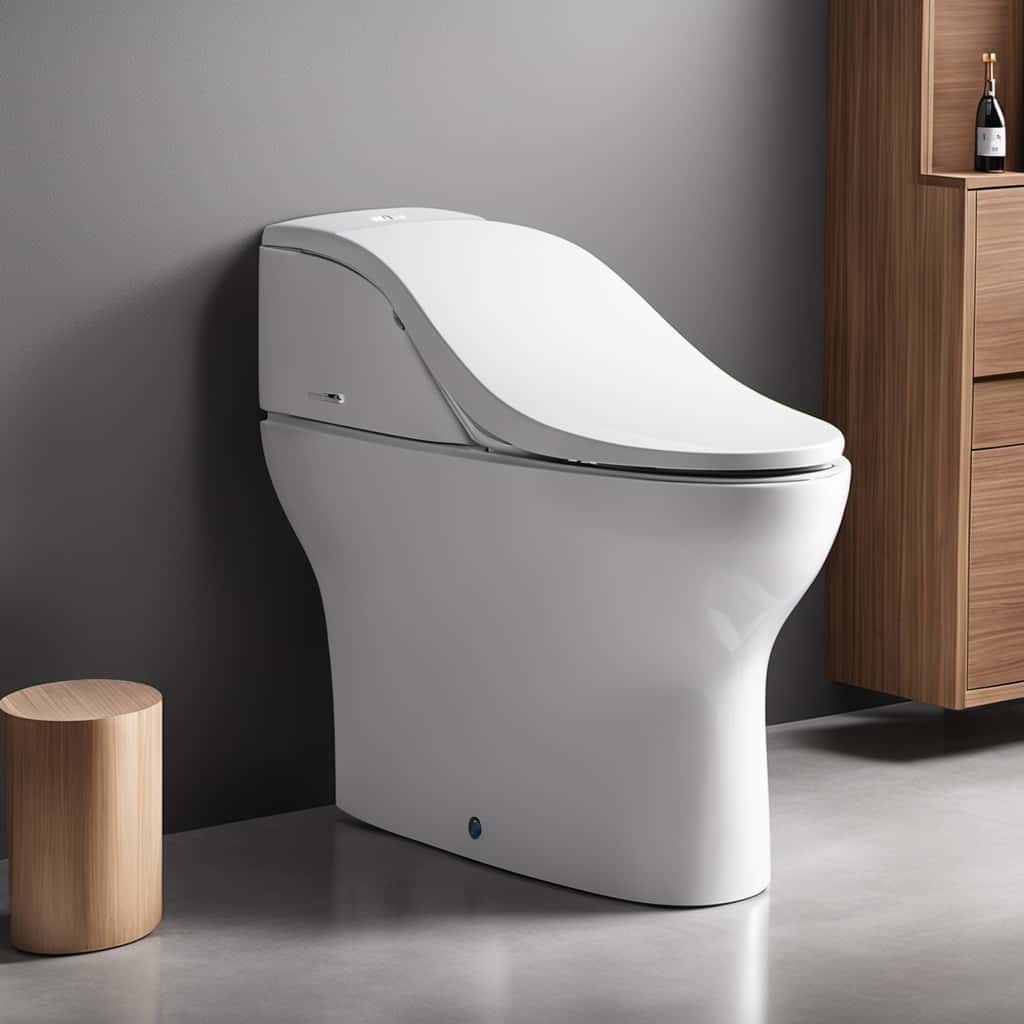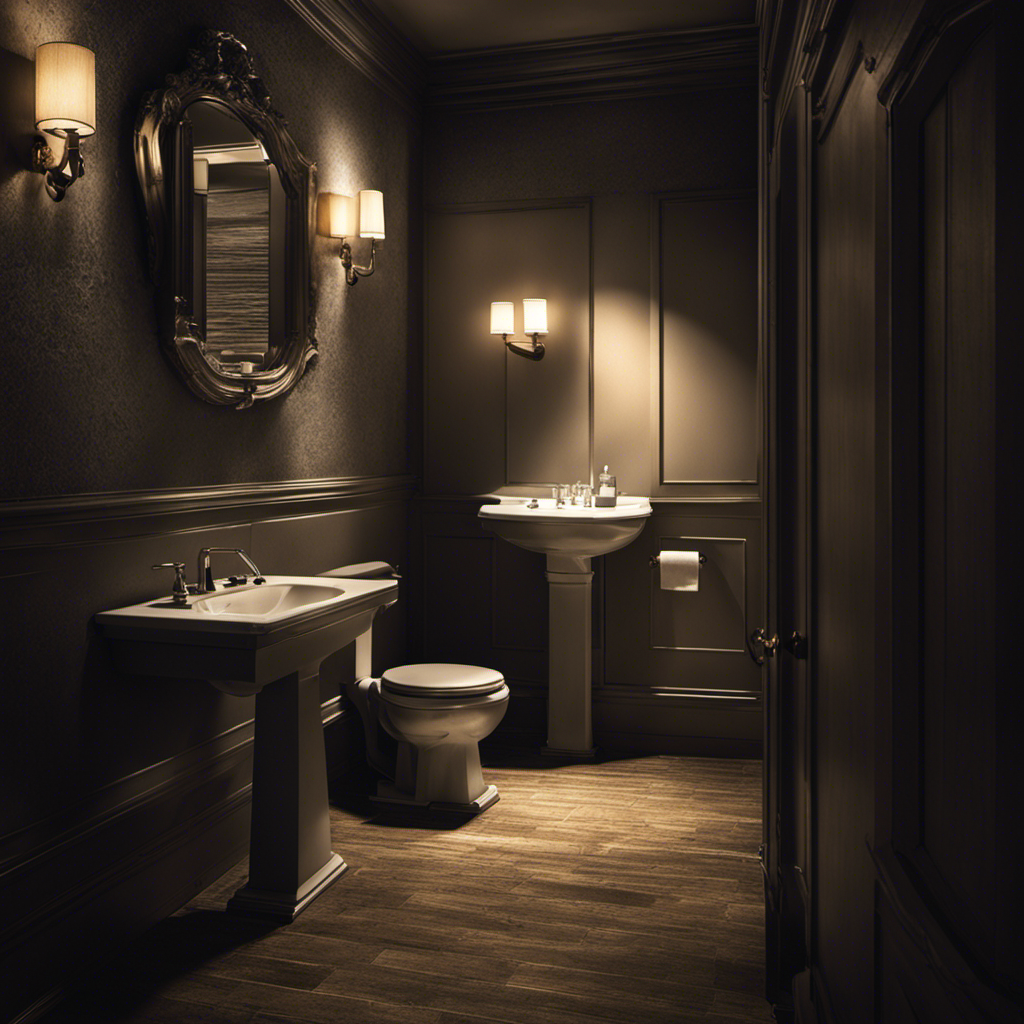If you need a bariatric toilet with extra support, look for models designed specifically for higher weight capacities and larger sizes. These heavy-duty options feature reinforced bowls, sturdy seats, and robust flushing systems to guarantee safety and stability. Proper installation and regular maintenance are key to their long-term performance. Keep in mind that choosing the right model can improve comfort and safety—stay with us to discover more about options and features that suit your needs.
Key Takeaways
- Choose toilets with higher weight capacities, typically up to 600-1000 lbs, designed specifically for bariatric needs.
- Ensure sufficient space and proper clearance around the toilet for comfort and safety.
- Reinforce flanges and secure installation to support increased weight and prevent leaks.
- Regularly inspect and maintain hinges, bolts, and flushing mechanisms for durability and safety.
- Consider professional installation to ensure compliance with safety standards and optimal performance.

Bariatric toilets are specially designed to support individuals with higher weight capacities, ensuring safety and comfort during use. If you’re considering one for your home or facility, understanding the installation tips is essential to guarantee proper setup and long-term performance. First, measure your existing space carefully to confirm the toilet’s dimensions, especially the width and height. Many bariatric models are larger than standard toilets, so verifying clearance around the bowl and ensuring enough room for comfortable use is crucial. When installing, make sure the flange and bolts are reinforced to handle the increased weight and stress. Follow the manufacturer’s instructions meticulously, paying close attention to sealing and securing the seat properly to prevent leaks or instability. Using the correct tools and hardware can make the installation smoother and help avoid costly adjustments later. Proper installation also ensures compliance with safety regulations, which is essential for safe operation. If you’re not confident in your skills, it’s wise to hire a professional plumber experienced with bariatric fixtures to guarantee everything is correctly fitted and functioning safely. Maintenance guides are just as important as the installation tips to keep your bariatric toilet functioning smoothly over time. Regular cleaning is vital; use mild, non-abrasive cleaners to prevent damaging the surface or components. The larger bowl and seat may require more frequent cleaning than standard models to prevent buildup and maintain hygiene. Check the hinges, bolts, and seat attachments periodically for signs of wear or loosening. Tighten or replace parts as needed to maintain stability and safety during use. Pay special attention to the flush mechanism—since it handles larger volumes, it can be prone to clogging or wear. Regularly inspect the flapper and fill valve, replacing them if you notice leaks or reduced flushing power. Also, keep an eye on the weight capacity limits specified by the manufacturer; exceeding these can cause damage or compromise safety. Ensuring the ventilation system is functioning properly is also important to prevent buildup of dangerous gases such as carbon monoxide. If your model has adjustable features or special parts, refer to the maintenance guide to guarantee they stay in prime condition. Proper maintenance not only prolongs the lifespan of your toilet but also guarantees safe, reliable operation, especially important for bariatric users.
Frequently Asked Questions
Are Bariatric Toilets Compatible With Existing Bathroom Fixtures?
When considering if bariatric toilets are compatible with your existing bathroom fixtures, you should evaluate plumbing compatibility first. These heavy-duty toilets often fit standard rough-ins, but during bathroom remodeling, you might need to modify your plumbing setup. It’s essential to measure your space carefully and check if the new toilet aligns with your current plumbing connections. This ensures a smooth installation without costly modifications or delays.
What Is the Weight Capacity of Most Bariatric Toilets?
Most bariatric toilets have a weight capacity ranging from 500 to 1,000 pounds, thanks to reinforced construction. You’ll find these models designed specifically to support higher weights securely, ensuring safety and durability. When choosing one, consider the weight capacity to match your needs. Reinforced construction provides the extra strength you require, making bariatric toilets a reliable option for individuals needing extra support.
How Do I Maintain and Clean a Bariatric Toilet Properly?
Think of your bariatric toilet as a trusted friend that needs regular care. To keep it in top shape, follow simple cleaning techniques like using mild cleaners and a soft brush. Maintenance tips include checking for leaks and tightening bolts periodically. Avoid harsh chemicals, and always dry surfaces thoroughly. Regular upkeep guarantees your heavy-duty toilet remains supportive and hygienic, extending its lifespan and keeping you comfortable and confident.
Can Bariatric Toilets Be Installed in Small Bathrooms?
You can install bariatric toilets in small bathrooms, but you should consider their space-saving design and aesthetic impact. Look for models that fit compactly without sacrificing support, and choose styles that blend well with your decor. Measure carefully to guarantee proper clearance, and select a unit that maximizes functionality while maintaining a clean, attractive look. This way, you get extra support without compromising your bathroom’s overall space and style.
Do Bariatric Toilets Require Special Plumbing or Electrical Hookups?
Bariatric toilets generally don’t require special plumbing modifications or electrical requirements. You usually can install them using your existing plumbing and standard electrical outlets, but it’s wise to verify your bathroom’s setup first. Some models might need minor adjustments for stability or height, but overall, they’re designed for easy integration. Always consult the manufacturer’s instructions or a professional installer to ensure a smooth and safe setup.
Conclusion
Choosing a bariatric toilet gives you strength and stability when you need it most. While traditional toilets may seem sufficient, they can fall short of providing the support and durability you deserve. Think of it as upgrading from a simple chair to a sturdy throne—your comfort and confidence deserve nothing less. With heavy-duty options, you’re not just choosing a toilet; you’re investing in peace of mind and dignity every day.










